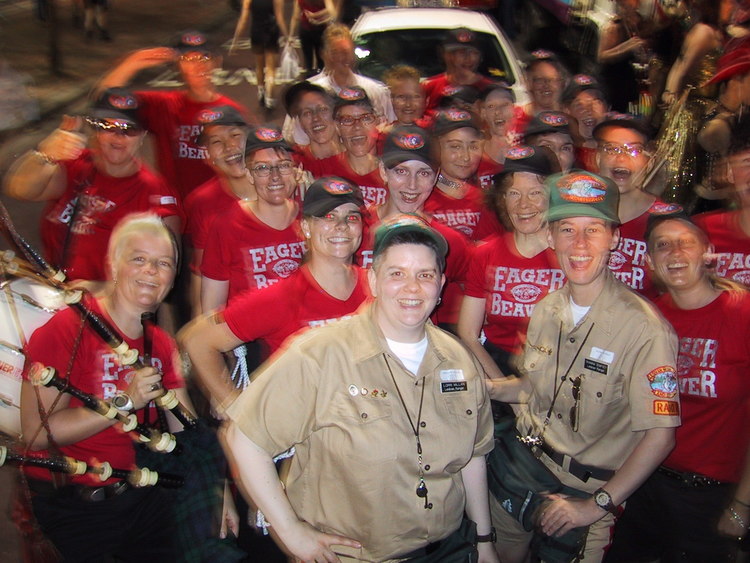It’s summer 1997, and 2SLGBTQ+ rights in Canada are a work in progress. Same sex couples cannot legally marry and in many parts of the country, they cannot adopt children.
Meanwhile, queer artists and activists are occupying spaces in the cultural landscape and are pushing for change. Two performance artists, Shawna Dempsey and Lorri Millan, bring their take on homosexuality, nature and queer visibility to an Albertan mountain town, and Lesbian National Parks and Services is born.
Lesbian National Parks and Services began life as a month-long performance that was part of an exhibition at the Banff Centre for Arts and Creativity. Shawna and Lorri took on the roles of lesbian park rangers.
They wore uniforms, set up a booth and created print materials to hand out to locals and tourists.
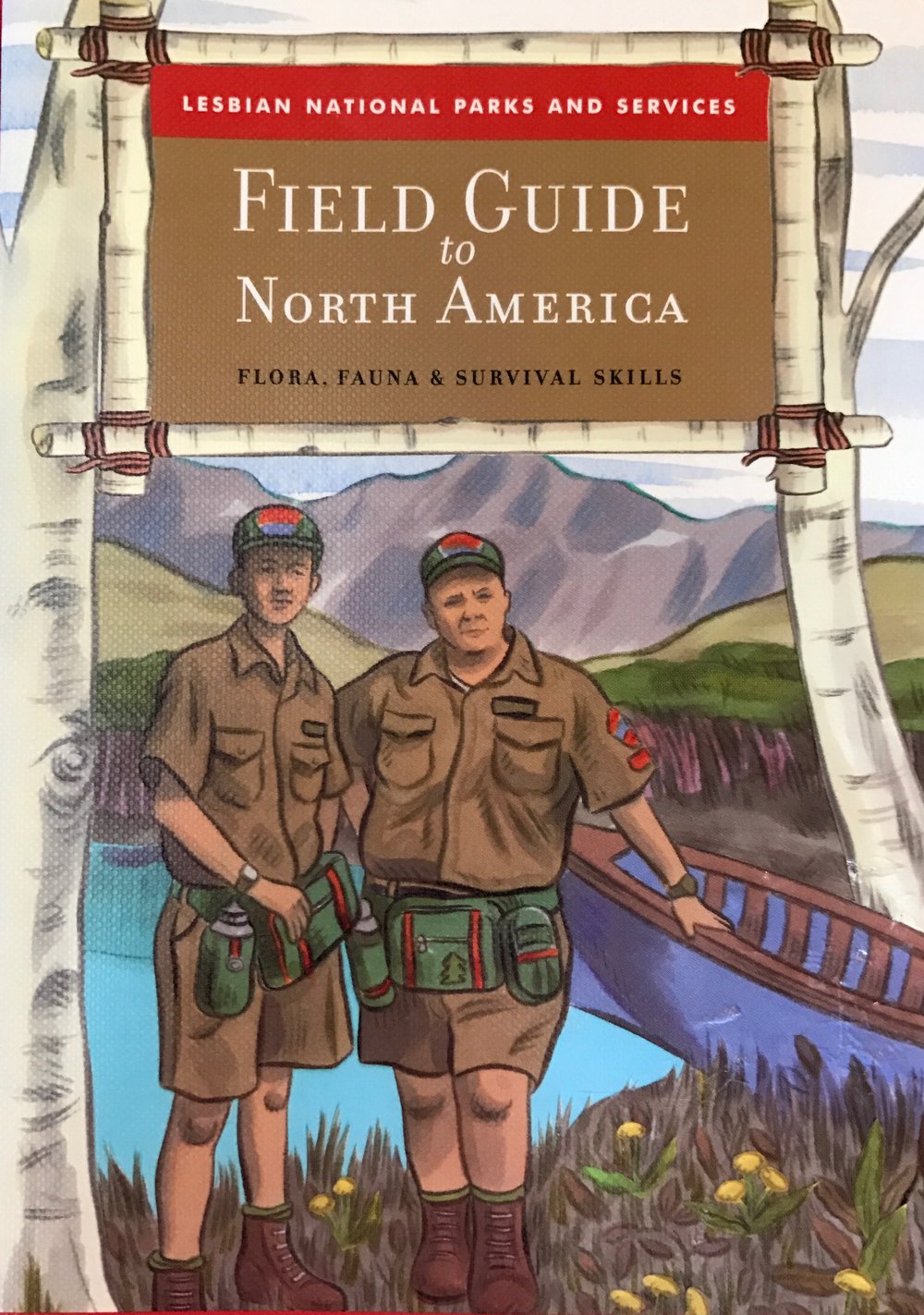
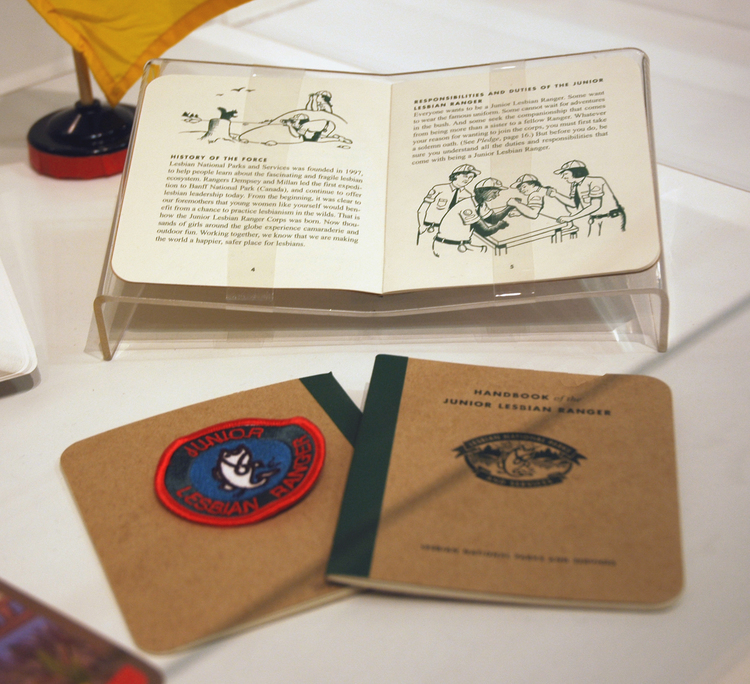
While their audience reacted with laughter, playfulness, confusion and discomfort, Shawna and Lorri picked apart social norms and encouraged people to rethink their perspectives. They used humor, the approachability of their park ranger personas and the Banff location to draw attention to serious issues affecting 2SLGBTQ+ people.
The Banff National Park setting created a unique opportunity for the artists. During a recent interview with the artists, Shawna notes, “The ranger is an authority figure and as lesbians, as queers, as women, we’re often not given that authority.”
The park was the perfect location to examine the intersection between homosexuality and nature while confronting one of the primary justifications for homophobia — the claim that homosexuality is unnatural.
The themes of the project were underpinned by a significant amount of research. Shawna and Lorri discovered there was an abundance of gender and sexual diversity in nature despite the fact that nature was rarely discussed within those contexts.
Shawna says that just as the field of conservation could be utilized to reinforce social norms, “We could likewise interpret nature through a lesbian lens to draw attention to the absence of queerness within models of biology, within conservation, within recreation.”
“We at Lesbian National Parks and Services like to think of Flora and Fauna as two women in a long-term relationship. They’ve had their ups and downs, but really they are most vulnerable to damage by outside forces.
“Hunters, outdoor enthusiasts, and even naturalists are sometimes guilty of rendering lesbian Flora and Fauna invisible, or interfering with their growth. So, while you are in the park today take the time to look around, and question the heterosexual model. Ask yourself what is ‘nature.’ Ask yourself what is ‘natural.’ And please, be careful not to step on any lesbians.”
Excerpt from Lesbian National Parks & Services Welcomes You to Banff brochure, Shawna Dempsey & Lorri Millan
Queer visibility was a central component in the work of the lesbian park rangers.
When they discussed initial ideas for their Banff residency, Shawna says, “It struck us that there was no queer presence in Banff.”
The map they created of the Banff townsite featured somewhat hard to find landmarks including the Invisible Lesbian Heritage House and Gardens and the Invisible Plaque Dedicated to our Founding Foremothers.
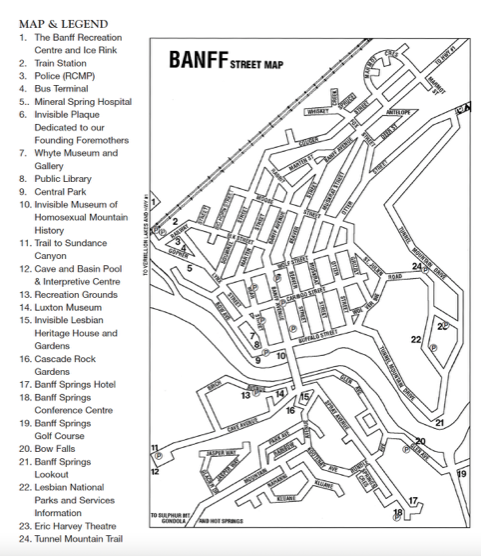
Speaking of the impact of the map, Lorri says, “Because it was a useful map with real streets and they could find their hotel using it, visitors would keep them. They would inevitably end up reading these informative panels about the work of the rangers and sometimes we would have people come back to us the next day and engage with us in a whole other way.”
The lesbian rangers remained in character for the entirety of their month-long residency, a commitment that was sometimes exhausting for the artists, but was also an important part of the work.
“Those cab drivers we met, or those postal clerks we met, they met a lesbian once. And that’s an important part of change,” says Shawna.
The lesbian rangers weren’t just there to educate visitors. The artists knew that some of the people visiting Banff would be queer people themselves, and they wanted those people to feel seen.
Lorri adds that one of the most rewarding outcomes of the project was the feedback they’ve had over the years.
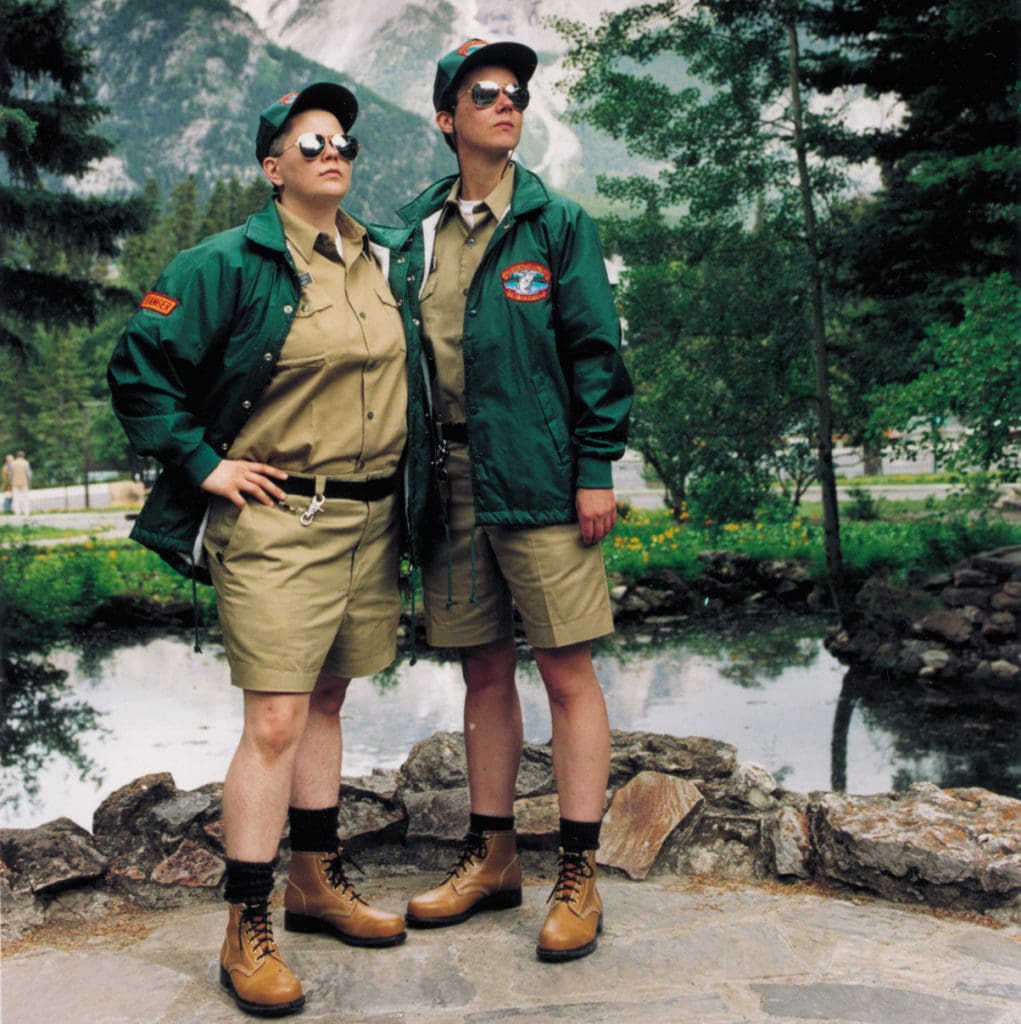
“We’ve received so much correspondence from people, a lot of them young, queer people, or parents of young, queer people, saying how much it meant,” she says.
Since the Banff performance in 1997, the lesbian rangers have undertaken tours of duty in North America, Australia and Europe. Videos, a junior lesbian ranger handbook and an illustrated field guide to North America accompanied these tours.
While much has changed for 2SLGBTQ+ rights in the past quarter century, the artists still see much work to be done around discussions of queer ecology.
“Even in recent years, when we have talked about gender diversity and diversity of sexual expression across species, people are shocked by that, because the ‘birds and bees,’ heteronormative, two mates creating offspring is so ingrained in our culture,” says Shawna.
The work continues. The summer of 2022, 25 years after the lesbian rangers stepped foot in Banff, the Banff Centre for Arts and Creativity invited artists to create work around “Ecologies of Precarious Abundance: Queer Life and Natures,” utilizing queer theory to examine the environment.
The immense landscapes of the Rockies continue to inspire artists to create work that delves into the complexities and diversity that exists within nature.
This article was written by Josephine Boxwell. Josephine is one of Y2Y’s 2022 story gatherers. These four unique people are sharing personal stories, memories and places related to the special landscapes of Alberta’s Eastern Slopes, often perspectives that are underrepresented in mainstream media. Read other stories in this series.
We are grateful for the financial support provided by Alberta Ecotrust and The Calgary Foundation for our story gatherer series.
